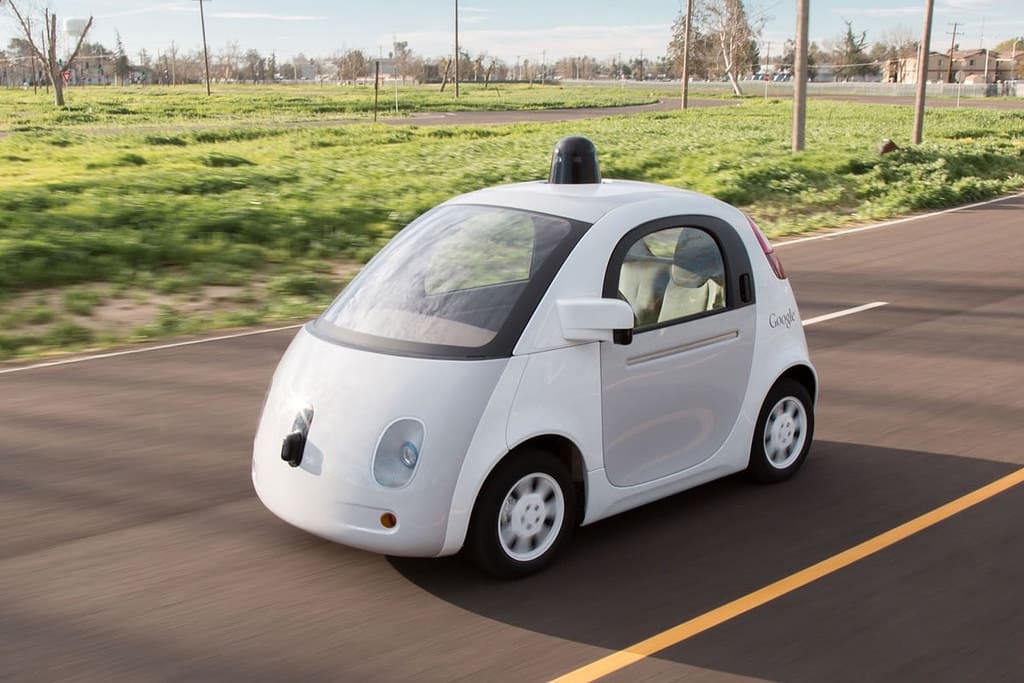
Self-automated cars are one of the most exciting developments in the automotive industry, perhaps since the invention of the car itself. Imagine a vehicle that drives itself, and the once autonomous driver becomes simply the passenger?
The positive and negative aspects of self-driving cars are being hotly debated, but car manufacturers are plowing ahead fearlessly despite any criticism. The idea of a car driving itself is just too tempting for inventive and forward thinking companies such as Tesla, a company that has arguably made some of the best electric cars on the market. All of the vehicles sold from Tesla since October 2016 are already equipped with self-automation, though it is running in shadow mode until further notice.
The self-driving cars from Google are a huge competitor for Tesla. They have been testing their vehicles for over a year now and is hoping to release the vehicle in 2018. The best part? The Google Car looks like an adorable marshmallow bot (see image above). It has a maximum speed of 50 km per hour and is made for moderate distant driving rather than large roadways. This vehicle has been a favourite in the auto-world so far and is set to become the most popular self-automated driving option once it hits market.
Self-automated cars will become widespread in the next few years, but is the world necessarily ready for such a change? Most countries haven’t even started the process of changing legislation to include self-automated cars. On the other hand, the government of the United States has a different agenda. The U.S. Federal Department of Transportation has embraced the future of self-automated cars and has started taking steps to create a series of regulations surrounding the new technology. They recently released the “The Federal Automated Vehicles Policy”, which listed rules such as securing the vehicles from cyber-attacks and that the cars must adapt to local laws.
The Ontario government recently approved the testing of three self-automated vehicles in November 2016, which is exciting. The University of Waterloo is testing on the aptly named ‘the Autonomoose’; the Erwin Hymer Group, an international automaker, is testing a Mercedez-Benz Sprinter Van; and, Blackberry will test a 2017 Lincoln. It’s great to see the Ontario government taking such a keen interest in self-automated cars.
One of the more high-tech and outlandish versions of the self-driving car is the Volkswagen Bus, proving that these cars can be made for multiple demographics. Volkswagen is coming out with a self-automated hippie van, which is due to be released in 2025. The vehicle will include a self-automation option and includes swivel front seats that allow the driver and passenger seat to turn around while driving so that they can hang out with their friends. The VW Bus also includes a touchscreen instead of a steering wheel and will control a number of functions, including ambient lighting and sound for ultimate enjoyment. Is this a good idea or a creepy futuristic play on the classic hippie van of the 1960’s?
The self-automated element of the car evolution goes even further with the Honda NeuV, a self-driving car that will use an AI system called Yui to control the vehicle and feel the driver’s mood and preferences. It includes mood lighting, massage beads in the seats and with eye-tracking sensors, would be able to adjust music depending on the person’s perceived mood. It appears the future of the robot takeover is imminent ladies and gentlemen.
On one hand, self-automated cars would lower the rate of accidents caused by human error. They would also allow for greater efficiency of travel of roads. Alternatively, there are many kinks in this type of technology, including the threat of cyber-hacking, the risk of technological malfunctions, and the question of ethics. It is has been suggested that self-automated cars wouldn’t react in an ethical manner if a child were crossing the road for example, and without being able to swerve may hit the small human. The vehicle may be able to stop more quickly if it is programmed for the child, but it is probable that the vehicle wouldn’t swerve out of the way to avoid the accident. Tesla also reported a fatality that occurred in early 2016 when a self-automated car crashed into a white lorry crossing the street, failing to differentiate its white colour from the bright sky above.
The self-automated car is a fascinating example of the future of the vehicle. It would allow for more shared use of vehicles (the vehicle could act as an Uber or taxi while you work) and it eradicates the rate of human error on the road. There still remains something uncomfortable about these vehicles though. It seems the future is drawing closer to technological dependence when considering self-driving vehicles and smartphones. There is also something beautiful about driving standard, hand on the stick with complete control over a roaring machine (electric though of course is preferred, environmental concerns must be considered a first priority!). What happens next with automated cars remains to be seen, but it appears we have entered into the futuristic world. What does that mean for us measly humans? Let us know what you think in the comments below.
